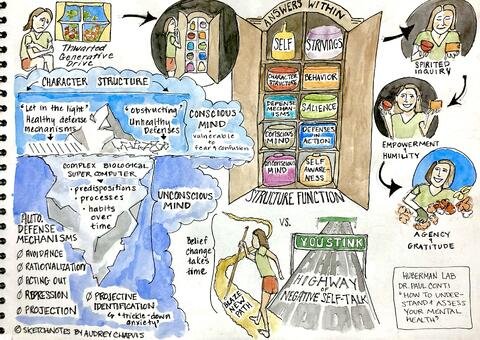Unlocking the Subconscious: Exploring the Iceberg Beneath the Surface
Most of us go through life operating on autopilot, responding to situations without fully understanding why we react the way we do. Our fears, emotional triggers, and deeply ingrained beliefs don’t come from nowhere—they stem from the subconscious mind, the vast part of our mental landscape that exists beneath our awareness. If the mind is an iceberg, our conscious thoughts are just the small portion above the water. Below the surface lies the subconscious, where memories, patterns, and limiting beliefs are stored, shaping how we experience the world.
In therapy, we begin to explore this hidden territory. Often, our struggles—whether in relationships, self-worth, or emotional regulation—are rooted in subconscious programming formed in early childhood. This programming consists of core beliefs, many of which go unquestioned for years, influencing our behaviors without us realizing it. For example, if a child grows up feeling they must earn love through achievement, they may become an adult who equates their worth with productivity, struggling to rest without guilt.
Dr. Andrew Huberman, in his podcast series on mental health with Dr. Paul Conti, discusses how the subconscious mind retains experiences, especially traumatic ones, even when we’re not consciously aware of them. These stored experiences affect our nervous system, emotional responses, and decision-making. Without bringing them into awareness, we continue to act from these outdated patterns, feeling stuck in cycles of fear, self-doubt, or avoidance.
Dr. Hubermans Podcast series:
Huberman Lab - Guest Series with Dr. Paul Conti
Therapy serves as a bridge between the conscious and subconscious mind. Through modalities like trauma-focused therapy, somatic work, and tools like Non-Violent Communication, we start uncovering the beliefs and emotions stored deep within us. The process isn’t about erasing difficult memories but about processing them differently—rewiring the neural pathways that keep us locked in old patterns.
One powerful insight from Dr. Conti’s work is that change isn’t just about logic; it’s about feeling. We can’t simply tell ourselves to stop believing we’re unworthy or to stop fearing vulnerability. The subconscious responds to experience, not just thought. This is why practices like breathwork, somatic release, and trauma-informed therapies can be so effective—because they allow us to integrate change at a deeper level, beyond rational thought.
As we do this work, it’s important to approach ourselves with patience and compassion. Unraveling subconscious beliefs isn’t an overnight process; it’s a journey of self-discovery. Every therapy session, every mindful reflection, every moment of self-awareness helps us chip away at the iceberg below the surface. Over time, we gain more control over our responses, break free from limiting beliefs, and move toward a life that feels more authentic and intentional.
Exploring the subconscious isn’t about “fixing” ourselves—it’s about understanding ourselves. When we shine light on the hidden parts of our mind, we empower ourselves to heal, grow, and step into a more conscious way of living.
For more information check out my latest Podcast Episode.
Listen Now: Therapy: Unraveling Patterns, Healing the Mind, and Finding Balance

